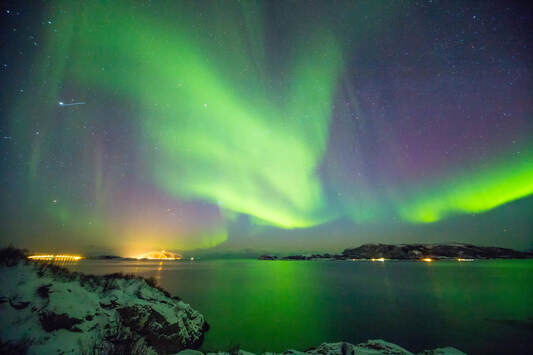Written by John Edward Betancourt  Caution: This article contains spoilers for the finale of ‘A Wild Year on Earth’. Over the course of the past few weeks, the BBC America documentary, A Wild Year on Earth, has done a phenomenal job of changing our perceptions of what life on our planet, looks like over the course of a single year. Because let’s be honest, we are buried deep within our carefully crafted world, one where we are free from the troubles that wildlife deal with on a consistent basis and that gives us quite the narrow worldview. So, being able to see how things go in the wild over the course of a year has allowed for us to come to understand how nature struggles mightily while we go about our day, and also how we are more connected with nature than we give ourselves credit. But while all of this has been downright fascinating and incredible to learn, all good things must come to an end, and our journey around the globe over the course of a year… came to a close by way of last night’s fascinating finale. For ‘Full Circle’, took the time to chronicle what life really looks like on Earth during November and December, and once again, we were able to see the fascinating contrast between man’s world and the natural world. Because normally for us, this time of year is when we tend to reflect upon our own yearly journey and celebrate the gift of life, we’ve been given; with family members by way of big dinners and gift giving. Whereas nature, has other tasks and concerns on its collective mind. For in the northern hemisphere, the cold has arrived at last and that means that a great deal of animals’ either head into hibernation to wait out the chill or get to work on surviving through the icy winter. Or in the case of some animals, they get ready to enjoy quite the bounty, since they are made to survive in the cold. Take the Eurasian Lynx for instance, a feline that is able to use its giant paws to provide it with stealth and silence when the snow begins to fall, since the unique padding of those paws, allows for it be silent as it moves toward its prey. And of course, there are the grey wolves of Yellowstone, that have wonderful coats to keep them warm, and large packs to help them hunt, giving them quite the advantage at a time when the elements make survival a genuine struggle. However, there was mention of this episode providing us with great contrast. A feat that was accomplished by way of showing us what the rest of the world looks like during November and December. Since those of us in the northern hemisphere only know the cold. But, in the southern hemisphere, spring has finally sprung and that change in temperature signals to so many animals, to bring new life into the world. Which is why the crabs of Christmas Island begin a mass migration to the beaches, so they fulfill that deep rooted call to keep their species going and they’re not the only aquatic being that is eager to breed during this time of year. For the Great Barrier Reef is host to the biggest mating ritual on the planet as it prepares to circle the sun once again. If anything, this was the perfect way to bring this series to a close. In part because this finale lives up to its namesake, by mirroring some of what the series premiere brought to the table. But more so because this episode did a phenomenal job of bringing this journey to its end in a thoughtful and humbling manner. Since this finale made it clear that we live in a world that is constantly in motion and fighting for survival and that we are lucky beings indeed since we are free from those troubles. To the point where we can observe it safely through a television screen. And that really does put a lot of our daily struggles in perspective and it definitely reminds the viewer to appreciate and cherish the gift of life that we've been given and to perhaps do a better job of protecting this precious world... so that the yearly traditions that take place for all... can continue without interruption.
0 Comments
Leave a Reply. |
Archives
April 2025
|
|
© 2012-2025, Nerds That Geek LLC.
All Rights Reserved. |
uWeb Hosting by FatCow

 RSS Feed
RSS Feed